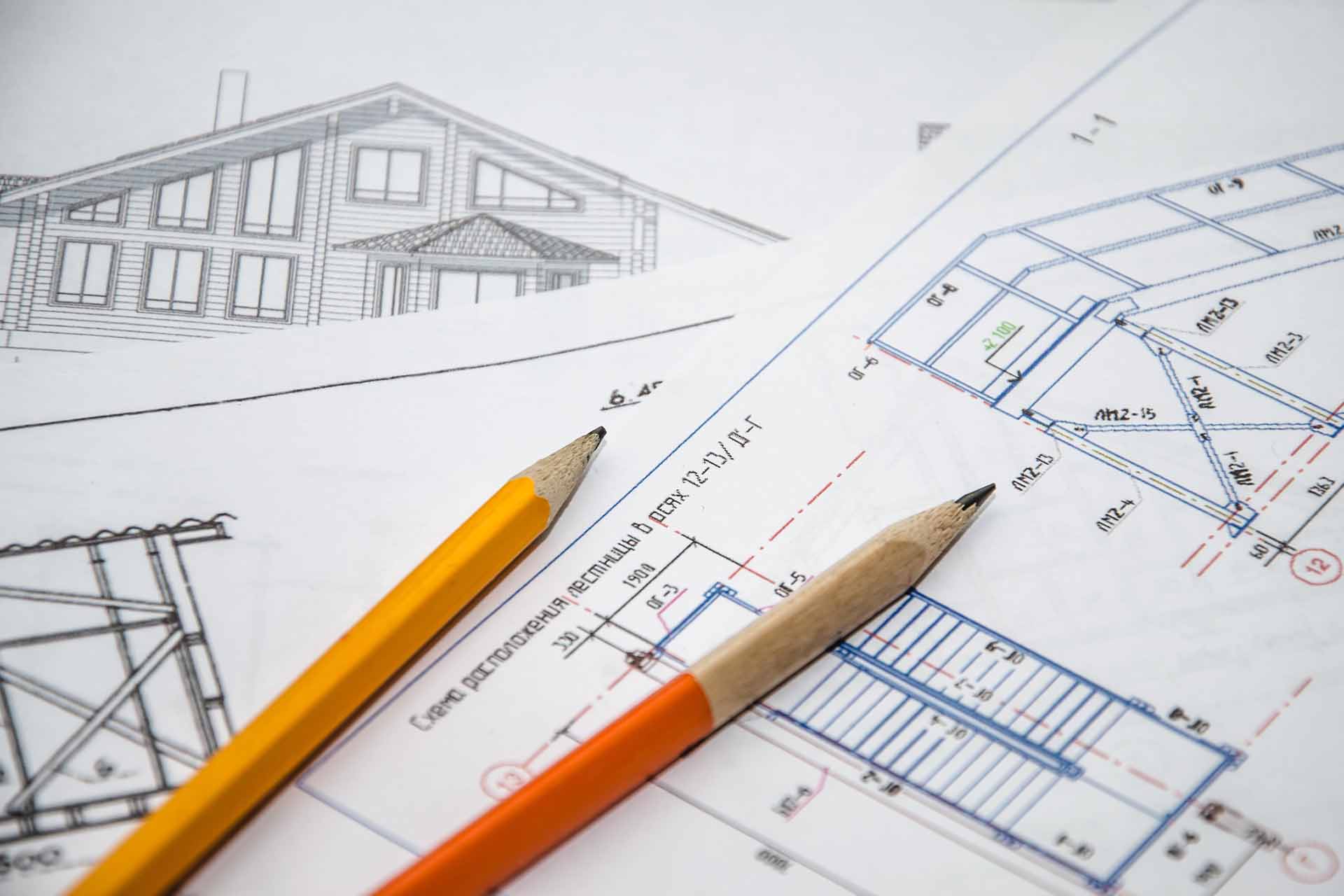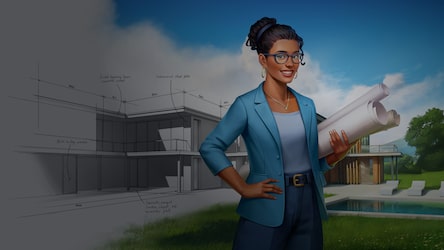Architect Rules for Designing Evergreen Interiors
Architect Rules for Designing Evergreen Interiors
Blog Article
Understanding the Diverse Profession Paths Available for Aspiring Architect
As a hopeful Architect, you have a globe of occupation paths waiting for you. Whether you're drawn to conventional design or the nuances of sustainable design, there's a particular niche that lines up with your interests.
Typical Design: Creating Structures and buildings
Traditional architecture focuses on creating buildings and structures that blend performance with visual appeal. As you explore this area, you'll value the complex equilibrium in between kind and purpose. You'll find out to draw inspiration from historic styles, incorporating aspects like balance, materials, and workmanship. Your designs can show cultural heritage, showcasing neighborhood practices while fulfilling contemporary demands.
You'll establish skills in drafting, model-making, and website evaluation, permitting you to imagine and interact your concepts properly. Engaging with customers, you'll need to understand their vision and translate it right into possible styles.
Furthermore, developing codes and sustainability techniques are important in your job, ensuring your frameworks are risk-free and environmentally friendly. As you grow in your profession, you'll locate chances in household, commercial, or also restoration projects, each offering unique challenges. Accepting typical design paves the way for a satisfying profession that pays homage to the past while forming the future.
Urban Planning: Forming Areas and Public Spaces
As an ambitious Architect, you can play a vital role as a metropolitan coordinator, transforming just how neighborhoods operate and interact. By employing neighborhood involvement approaches, you'll ensure that homeowners have a voice in forming their atmosphere. And also, integrating lasting layout principles will assist develop spaces that not only fulfill today's requirements however also shield the future.
Duty of Urban Planners
While several may believe of engineers as the sole enthusiasts behind structures, metropolitan planners play an essential function in forming the more comprehensive landscape of areas and public areas. They assess land use, zoning legislations, and neighborhood needs to produce lasting settings that enhance lifestyle. By working together with numerous stakeholders, you'll help develop parks, transport systems, and household areas that promote social communication and accessibility. Urban planners also concentrate on ecological factors to consider, ensuring that advancements integrate eco-friendly rooms and assistance biodiversity. Your knowledge in spatial style and neighborhood dynamics enables you to imagine future development while maintaining social heritage. In this important function, you'll straight affect exactly how people experience their surroundings, making every job a chance for positive change.
Community Interaction Methods
Efficient community involvement approaches are vital for urban organizers to ensure that the voices of residents are listened to and valued in the planning process. To cultivate significant dialogue, you must focus on open forums and workshops where community participants can express their concepts and worries. Use studies and social networks to reach a more comprehensive target market, guaranteeing varied point of views are consisted of. Working together with regional organizations can boost trust and promote deeper links. It is very important to offer clear details about decision-making procedures and suggested projects, enabling citizens to feel enlightened and empowered. By proactively integrating and paying attention comments, you'll develop spaces that show the area's demands, eventually resulting in even more sustainable and successful urban atmospheres. Accept transparency and continual discussion for long lasting effect.
Lasting Layout Principles
When developing urban spaces, incorporating lasting style concepts is essential for producing environments that flourish both environmentally and socially. You must begin by concentrating on energy performance, making use of products that lower waste and advertise recycling. Consider incorporating environment-friendly rooms, like gardens and parks, to improve biodiversity and enhance air high quality. Promoting walkability and public transport can minimize reliance on vehicles, fostering a much healthier neighborhood.
Designing with water preservation in mind is likewise crucial-- consider rainfall gardens and absorptive surface areas to handle stormwater. Entailing neighborhood participants during the preparation procedure assurances that the rooms you produce fulfill their requirements and motivate social interaction. By accepting these principles, you'll add to vibrant, sustainable city landscapes that benefit every person.

Landscape Style: Developing Lasting Outside Environments
As you explore landscape style, you'll find vital design concepts that create functional and stunning exterior rooms. Sustainable techniques play an important role in making sure these settings prosper while decreasing ecological impact. And also, you'll locate a variety of career possibilities that enable you to make a real distinction in exactly how individuals connect with nature.
Style Concepts in Landscape
Comprehending design principles in landscape architecture is crucial for developing lasting outside atmospheres that harmonize with nature. You'll need to contemplate aspects like proportion, scale, and equilibrium to assure your designs really feel natural and inviting. Integrating indigenous plants not only improves biodiversity yet also decreases water use, making your landscape resilient. Assume about the flow of area and just how individuals interact with it; pathways and seating areas must welcome expedition and relaxation. Furthermore, take notice of seasonal changes, developing with materials that enhance the surroundings year-round (Architect). By prioritizing sustainability and aesthetic appeals, you can create outside areas that enrich the neighborhood and promote well-being. Accepting these concepts will certainly establish a solid structure for your job in landscape style.
Lasting Practices Introduction
Sustainable methods in landscape architecture not only concentrate on looks but likewise focus on eco-friendly health and resource preservation. You can make spaces that advertise soil health and wellness, such as exercising and making use of natural materials permaculture principles. Eventually, these techniques guarantee your designs profit both people and the setting for years to come.
Job Opportunities Exploration
With a solid structure in lasting methods, landscape design uses a selection of job paths that permit you to make a purposeful effect on the environment. Urban organizers usually team up with landscape designers to create environment-friendly areas in urban setups, enhancing city livability. If you're passionate concerning education, consider ending up being a landscape style instructor, inspiring future generations.
Lasting Design: Concentrating On Eco-Friendly Practices
As you explore your career in architecture, welcoming green practices can set you apart in an affordable field. Lasting design concentrates on developing structures that minimize ecological influence while enhancing owner well-being. By integrating renewable materials, energy-efficient systems, and lasting building methods, you'll add to a greener future.
Begin by gaining understanding of environment-friendly qualifications like LEED or BREEAM, which can bolster your credentials. Take into consideration just how all-natural light, air flow, and thermal efficiency can enhance design. Team up with engineers and environmental experts to introduce services that minimize waste and preserve sources.
Don't forget the importance of neighborhood participation-- interesting neighborhood stakeholders can inspire designs that harmonize with the atmosphere. As customers significantly focus on sustainability, your experience in environmentally friendly techniques will not only attract projects but likewise accomplish your interest for liable style. Welcome this essential element of the profession, and view your occupation grow.
Historic Preservation: Securing and Recovering Social Heritage
While you begin on your architectural journey, consider the crucial duty of historical conservation in preserving our cultural heritage. This field concentrates on the protection and restoration of significant buildings, websites, and frameworks that inform the tales of our past. By engaging in historic conservation, you'll aid guard the building heritage that forms area identity.
As a historical preservation Architect, you'll examine historical significance and analyze the condition of frameworks. You'll work carefully with historians and conservationists to assure authentic reconstruction strategies are utilized. This career path permits you to blend creativity with study, enabling you to create services that value original products and workmanship.
Your job not just adds to sustainability by recycling existing buildings yet also promotes a feeling of pride within areas. Embracing this course will assist you become a guardian of history, maintaining the tales and aesthetics that enhance our lives.
Inside Architecture: Enhancing Indoor Spaces
Historical conservation and interior architecture both share a dedication to boosting the built atmosphere, however they concentrate on various elements. While historical conservation emphasizes maintaining a structure's historical and cultural value, interior design absolutely nos in on optimizing indoor areas for capability and visual appeals.
As a hopeful Architect, you'll locate that indoor design enables you to mix imagination with technological abilities. You'll design spaces that not only look great however likewise promote comfort and effectiveness. This area involves recognizing just how light, shade, and products connect within a room, influencing mood and usability.
You'll work with various projects, from domestic homes to business workplaces, ensuring that each setting fulfills the demands of its owners. By focusing on individual experience, you can transform interiors into useful and inspiring spaces, making a considerable effect on exactly how people interact with their environments. Accept the opportunity to enhance interior settings and shape the way individuals function and live.
Industrial Style: Merging Capability With Appearances
Commercial style plays a necessary function in creating items that perfectly blend aesthetics with capability, making sure that what you use day-to-day is not just aesthetically attractive but additionally useful. As an aspiring Architect, you can engage yourself in this area, focusing on designing whatever from furnishings to customer electronics. Your work involves comprehending user requirements, materials, and producing procedures, permitting you to go to the website produce innovative remedies that improve day-to-day experiences.
In industrial layout, you'll commonly work together with manufacturers, designers, and marketing experts, making certain that your designs are read this post here not only beautiful but additionally feasible. You'll discover to stabilize kind and function, prioritizing use without sacrificing style. By developing your abilities in laying out, 3D modeling, and prototyping, you'll be well-equipped to bring your ideas to life. This career course offers a dynamic environment where imagination meets functionality, making it a satisfying selection for architects interested in shaping the items of tomorrow.
Frequently Asked Inquiries
What Educational Accreditations Do I Need to Come To Be an Architect?
To come to be an architect, you'll require an expert degree in style, commonly a Bachelor's or Master's. Furthermore, you'll have to finish a teaching fellowship and pass the Architect Enrollment Evaluation to exercise lawfully.
Exist Accreditation Requirements for Different Building Career Paths?
Yes, there're accreditation demands for different building paths. Architect. You'll need to pass exams, full internships, and occasionally go after specialized training, depending upon your chosen emphasis, like landscape architecture, metropolitan design, or historic conservation
What Software Application Skills Are Crucial for Designers Today?

Exactly How Can I Gain Practical Experience While Studying Architecture?
You can get practical experience by interning at architectural companies, joining layout competitions, offering for neighborhood projects, or teaming up with schoolmates on real-world assignments. These opportunities boost your skills and build valuable connections in the industry.
What Job Opportunities Exist Outdoors Typical Design Firms?
You can check out different work possibilities outside conventional design firms, like urban preparation, interior decoration, landscape style, building and construction administration, actual estate advancement, and even roles in sustainability consulting. Each deals one-of-a-kind difficulties and incentives.
Whether you're drawn to typical architecture or the nuances of lasting layout, there's a specific niche that straightens with your interests.When creating city spaces, integrating sustainable layout concepts is essential for producing settings his response that thrive both ecologically and socially.As you check out landscape design, you'll uncover essential layout principles that produce practical and beautiful outdoor spaces.Comprehending style concepts in landscape style is necessary for developing lasting exterior settings that integrate with nature.In commercial layout, you'll often collaborate with marketing experts, designers, and suppliers, making certain that your layouts are not only stunning but also viable.
Report this page